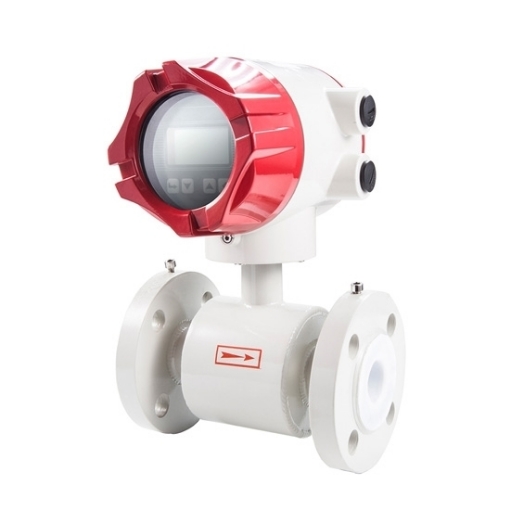An electromagnetic flow meter (EMF for short) is an instrument that uses the principle of electromagnetic induction to measure the flow of conductive fluid based on the electromotive force induced when the conductive fluid passes through an external magnetic field.
SISCO often receives consultations about the faults of electromagnetic flow meters, but after our careful understanding, we found that many faults are not product damage, but improper use by users. In order to avoid more friends from entering this misunderstanding, the following SISCO will introduce the correct method of using the magnetic flow meter.

Steps for using a magnetic flow meter
Step 1: Wiring
Generally, the process measurement instrument is a two-wire system, and the power supply and signal share two wires. The magnetic flow meter adopts a four-wire system, and the power supply and the signal line are separated. It can use either a DC power supply or an AC power supply. The output signal includes both the current signal and the pulse and alarm signal. Wiring must be careful, and the power supply and signal line cannot be connected incorrectly, so as not to damage the flow meter.
Step 2: Parameter Settings
The electromagnetic flow meter calculates the volume flow according to the tiny induced voltage corresponding to the fluid flow and outputs a 4-20mA signal. In order to ensure the correct signal, three parameters must be set before use, namely diameter, meter factor and flow range. Among them, the first two parameters have been calibrated before leaving the factory, and the user does not need to set them. The flow range is the instantaneous flow value when the output current is 20mA, and must be calibrated before use. In addition, the flow meter display mode, alarm mode, etc. must be set. There are two ways to set the parameters (configuration) of the flowmeter: one is to use the buttons on the display panel, and the other is to use a handheld smart terminal.
- Panel button setting: Electromagnetic flowmeters are generally equipped with a display panel, with 6 LCD displays, 3 buttons and status indicators. Through the combination of SET, SHIFT, and INC, all parameters can be set, such as display mode, display unit, range, etc. For specific settings, please refer to the manual of the electromagnetic flowmeter.
- Intelligent terminal setting: The instrument with an intelligent communication function can communicate with the intelligent terminal. Since the modulating signal is an AC signal, superposition does not affect the value of the analog signal.
There are two ways to connect the intelligent terminal to the flow meter: one is directly connected to the BT terminal under the cover of the flowmeter, which is suitable for on-site debugging or the flow meter does not have the intelligent communication function; the other is to connect the 4~20mA DC signal line, the intelligent terminal can be connected anywhere from the control cabinet to the flowmeter signal line, the maximum distance can reach 2km, as long as the load resistance loop of the whole machine is guaranteed to be between 250~750w, it can communicate reliably.
Step 3: Intelligent Terminal Adopts Menu Operation Setting
- Flowmeter self-test: Any flow meter should perform a self-test before use or when it fails. Using the self-test function of the flow meter, you can know the state of the flow meter, determine the content and scope of the fault, and facilitate repair and maintenance. Only self-test meters can work properly.
- Range adjustment: The flow meter must be zero-adjusted and range-adjusted before and after it is used for a period of time to ensure the maximum instantaneous flow rate corresponding to the 20mA output of the flowmeter. When there is no flow, the output is 4mA, that is, a 4-20mA signal proportional to the flow is obtained, reducing measurement and conversion errors.
- The display mode setting: The display mode of the electromagnetic flowmeter can be set according to the needs, such as display times, display unit, display instantaneous flow or cumulative flow, display value or its percentage, etc., the user can choose as needed.
- Alarm setting: The alarm current can be set in advance according to the needs, the alarm output mode can be selected, and the alarm state can be set, so that the operator can deal with the fault and prompt to replace the flowmeter in time to avoid further expansion of the fault.
- Other settings: The operator can also set the time constant of the flowmeter according to the actual situation, eliminate pulsating flow, change the flow direction of the liquid, etc.

